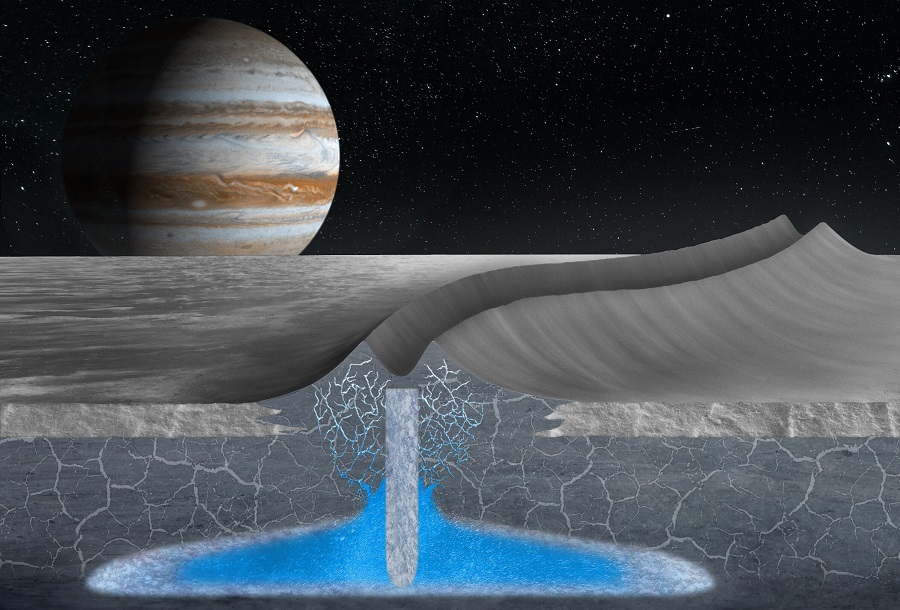The ice of Jupiter’s moon Europa may not be solid. There should be water pockets, and life — in them, as it happens in Antarctic and Greenland glaciers on Earth.

Water pockets inside glaciers
Scientists have drawn attention to the similarity of the double ridges of Greenland with similar structures on Jupiter’s moon Europa. In both cases, we are talking about the fact that previously these formations were deep cracks that closed and tightened. However, recent data indicate that voids with liquid water can be stored deep under them.
From 2015 to 2017, NASA scientists investigated the formation of double ridges in Greenland. Radar images indicate that the ice near such formations is never solid. It has water pockets. And as the study shows, life can exist there, at least at the level of single-celled organisms.
The scientists presented their conclusions in an article published in Nature Communications. It notes that in Europe it has been possible to observe only the opening and closing of cracks, resulting in the formation of double ridges on the ice. But it has not yet been possible to penetrate the radar through the ice of this moon. But scientists are sure that it cannot be solid.
Why scientists are looking for life in the ice of Europe
The possibility of the existence of water cavities in Europe greatly intrigues scientists. Due to the presence of an ocean under the ice, this moon is considered the main candidate for the search for extraterrestrial life in the Solar System. There may also be underwater volcanoes. But a thick layer of ice insulates Europa’s ocean from much-needed sunlight and organic matter.
The last are actively falling on the surface of Europa from other moons. Also, the surface of the moon has a lot of oxygen, getting there from the radiation belts of Jupiter. Scientists think a lot about how all these substances can get into living beings. Recently, for example, the idea was put forward that brines can act as transport, which fall into the ice crust due to special forms of relief — chaos.
The new idea does not exclude this concept, but complements it. The study of glaciers on Earth shows that they are much more complex than a giant block of ice. Cavities form and disappear inside, and water moves. It is quite possible that the same thing is happening in Europe, but on a large scale.
According to phys.org
